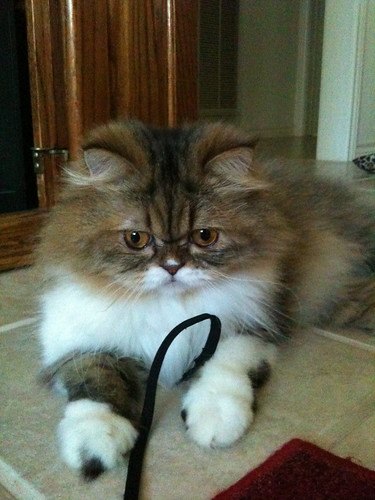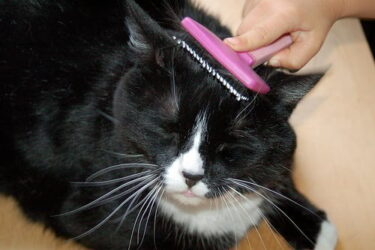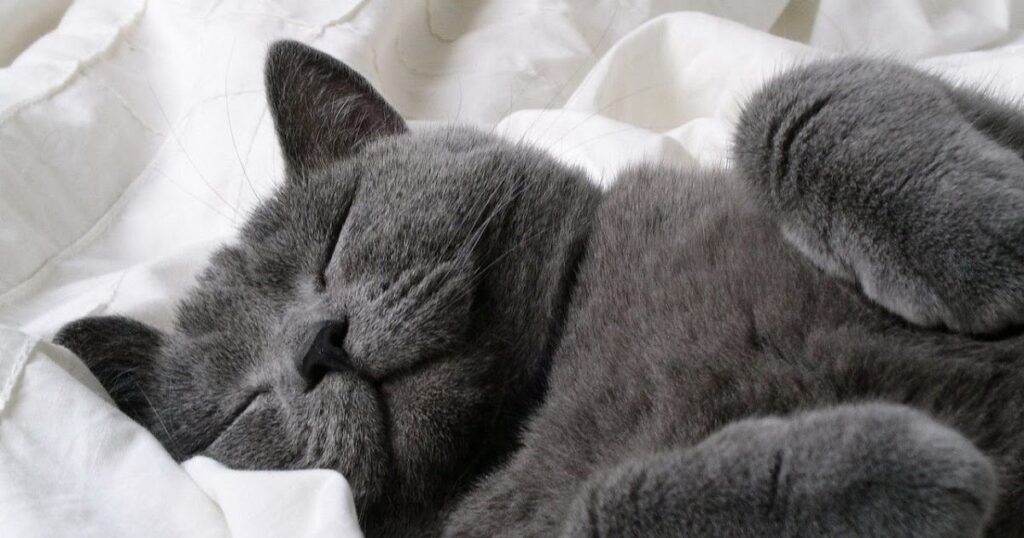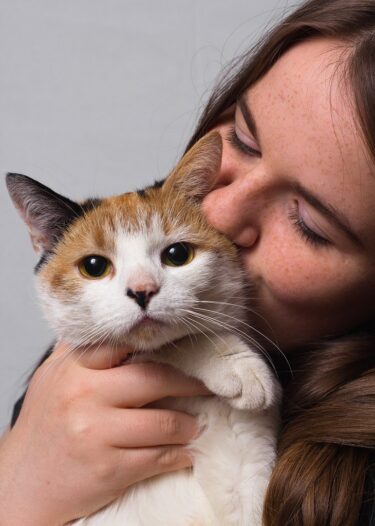It’s true — Your cat thrives on having a routine, because he’s a creature of habit. It’s one of those strange cat behavior facts that you discover if you’ve lived for much time with a cat. It might be helpful to know what elements are typically part of your cat’s routine, and the reason for their importance.
To gain an overview of this topic, I used an innovative tool. Have you experimented at all with AI (Artificial Intelligence)? If not, you might find it interesting. Go to chat.openai.com and you will arrive at a site where you can ask any question you wish. In the time it takes to type an answer, you will receive one.
When I asked ChatGPT about a cat’s routine, I received a list of items typically part of a cat’s routine, and why they are important. Here’s the list I received:
- Feeding schedule
- Playtime and exercise
- Litter box maintenance
- Grooming
- Rest and sleep
- Social interaction
Following these titles, I received a general description of each topic. Using this list, I continued my research to find out what other sources had to say about them. Let’s look at them one at a time.
Feeding Schedule
Your cat prefers to eat two or more meals a day, and will get used to a routine mealtime if you establish it. Decide the times you can best accommodate this need, keeping in mind the cat’s preferences. He wants breakfast, will get used to receiving it at a certain time, and will nag you until you prepare it.

He needs his evening meal at about the same time every night. With Mocha, I’ve established a third small meal that he gets right before bedtime. He gets a small serving of kibble, which he eats immediately, and a half-portion of canned food, served cold from the refrigerator.
Since a cat likes his food at room temperature, that works out rather well. Mocha eats his kibble immediately, but saves the canned food for the wee hours of the morning, after it has warmed a bit, thus saving me from hearing him yowl because he wants more food.
Cats also like a source of fresh water at all times. For my fur baby, I use a cat water fountain, and he finds this device quite satisfactory.
Playtime and Exercise

You might estalish playtime at about an hour after their morning meal. As cats tend to stay awake and active more in the morning, set aside a time before kitty’s nap for about 10 to 15 minutes of play. Play again in the afternoon before supper so the cat will be more likely to sleep through the night.
Your cat must have regular exercise. If he goes outside part of the day, that need gets taken care of. However, if he lives indoors all the time, it becomes your job to find toys and games that will get him moving during his play sessions.
Wand toys or objects kitty can chase make good sources for exercise. Mocha loves chasing his little springs, finding many novel places to hide them. Then I have to look. Since he loves running after them, it’s worth the time spent looking for them.
Litter Box Maintenance

A cat is a fastidious animal. You must keep that litter box clean so he won’t mind using it. You will eliminate the problem of his finding an appropriate place to deposit little surprises for you if you keep the box very clean. You will also eliminate a great source of kitty stress by keeping it clean.
Grooming
Your cat will spend quite a bit of time grooming his coat. The partial reason for this behavior stems from the time when a cat lived in the wild. Keeping the coat clean and odor-free kept kitty safer from predators.
Besides, I sometimes think they do so much grooming out of a kind of kitty vanity that makes them always want to look their best.

You can help your cat with grooming. Pick a quiet time when he settles down to do some serious washing-up. Get out your kitty brush and comb and help him with the task. By doing so, you will help strengthen the bond between you and kitty.
You can also find matted fur that needs removed, or discover any skin issues the cat may have developed. If it’s shedding season, you’ll cut down on the amount of hair threatening to cover every surface of your house.
Rest and Sleep
If you love your nap time, you should appreciate your cat! A cat averages between fifteen and twenty hours of sleep a day. Since they become most active at dawn or dusk, ranking as crepuscular creatures, they sleep a lot during the day and during darkest night.
Your cat does not sleep so much out of laziness. He needs his rest to rebuild and prepare his body for the daily activities undertaken. Energy levels are recharged and maintained.

Do kitty a favor and ensure there are plenty of cozy spots around your house to nap. One of Mocha’s favorite spots presents a challenge to reach. He jumps on the bathroom sink, then to the top of the stackable washer-dryer, then to a high cubby under the roof meant for storage.
There, he naps on a futon stored in that high spot. Not only does he find it comfortable, but he’s ‘way above the world where he can watch any activity below him…an ideal cat combination.
Social Interaction

Many of those not in the know often think of cats as aloof and non-social. They miss an important part of “kittyness.” If your cat has bonded with you, he needs some quality time with you. Petting, cuddling, and play make the bond stronger and provide emotional well-being.
Cats don’t like surprises. They want to know what to expect. They want life to be predictable, because it gives them a sense of security. When needs become met on a scheduled daily basis, the cat feels safe and secure. He knows he will receive the same treatment each day.
Why Does A Cat Thrive On Routine?
Because life then becomes predictable, kitty’s stress reduces. The cat can learn to trust the owner to provide all basic needs. A routine can reduce boredom, because regular play and exercise times become part of the schedule. The cat will prove much less apt to engage in destructive behavior.
This routine helps keep them healthy. They will become less apt to groom excessively, pace compulsively, resort to yowling a lot, or become agitated or aggressive.
Changes In Routine Can Cause Sickness In Cats
Studies have been done that demonstrate that when a cat’s environment and daily routine becomes changed, the result can be kitty stress. Such stress led many of the cats in one study from Ohio State University to developing FID (feline interstitial cystitis), an inflammatory condition, often painful, of the bladder and urinary tract.
When the cats returned to their normal routine, the stress passed and their health returned.
Creating a healthy boundary between humans and cats give kitty the advantage of knowing how his day can best be spent. What a fine gift to give your feline friend!
References I used for this post: consciouscat.net/cats-thrive-routine/ ragdolllove.com/routines-for-your-ragdoll-cat/ petkeen.com/why-do-cats-thrive-on-routine/ animalshq.com/what-is-a-cats-daily-routine/

